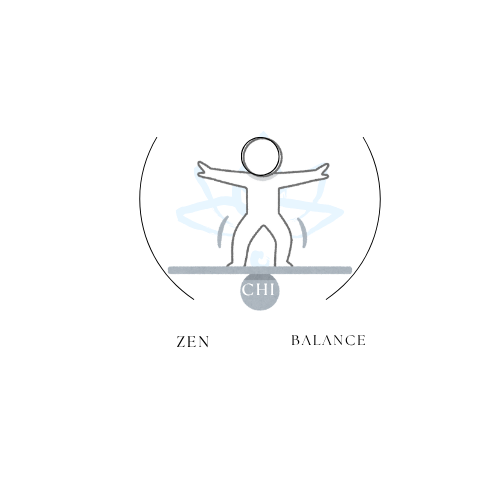
Mindfulness Journal Prompts That Spark Daily Presence
Share
Updated on: 2025-10-20
Table of Contents
- Why a mindfulness journal supports your daily rhythm
- What is a mindfulness journal?
- Mindfulness diary vs meditation journal vs gratitude journal
- How to start a mindfulness journal step by step
- A simple daily setup that fits in five minutes
- When to write for the best follow-through
- Mindfulness journal prompts for clarity and calm
- Mindfulness journal prompts for anxiety
- Gratitude-flavored prompts that build presence
- Benefits and reasons to choose a mindfulness journal
- Real-world use cases and testimonials
- Mindfulness journal FAQ
Why a mindfulness journal supports your daily rhythm
A mindfulness journal gives you a simple, steady place to pause, notice, and return to the present. When your day is full, your attention gets pulled in many directions. A few clear prompts can help you notice what matters without overthinking. Whether you lean toward a mindfulness diary, a meditation journal, or a gratitude journal, the goal is the same: create a calm moment that anchors your mind and keeps you intentional.
With a product-focused approach, it helps to pick a journal that removes friction. Choose a compact size that opens flat, uses smooth, low-bleed paper, and offers guided entries so you never face a blank page. That way, your mindfulness journal becomes the easiest habit in your morning or evening routine.
What is a mindfulness journal?
A mindfulness journal is a guided tool for observing thoughts, feelings, and sensations without judgment. It supports mindful meditation by giving your attention a clear path: breathe, notice, write, and close. The format often includes short prompts, room for a few lines per entry, and a place to note what you want to carry into the day. This is not about writing pages. It is about staying present in just a few minutes.
Mindfulness diary vs meditation journal vs gratitude journal
All three have overlap, but each one emphasizes a different lens:
- Mindfulness diary: A brief, daily capture of what you notice right now—sounds, sensations, thoughts. It encourages simple awareness and non-judgment.
- Meditation journal: A short log before or after a session. It helps you note posture, breath, and insights that arise during mindful meditation.
- Gratitude journal: A focus on appreciation. Listing what you are grateful for can naturally support a more mindful state throughout the day.
Many people blend all three. A well-designed mindfulness journal can include prompts for mindful meditation and gratitude, so you can shift focus as your needs change.
How to start a mindfulness journal step by step
If you are asking, “How do I start a mindfulness journal?” keep your setup simple and repeatable. Here is a small framework you can use right away:
- Step 1 — Choose your format: Pick a compact, guided journal that fits your bag or desk. Look for undated pages so you can start anytime and skip guilt if you miss a day.
- Step 2 — Set a five-minute window: Consistency beats length. A short window means you will show up more often.
- Step 3 — Use one prompt: One question is enough to focus your mind. Write 3–5 lines only.
- Step 4 — Close with intention: End with one sentence for how you want to show up next. Keep it simple and actionable.
To browse tools that make this routine effortless, explore the journals on our home page: Shop journals.
A simple daily setup that fits in five minutes
Place your mindfulness journal on your pillow in the evening or next to your coffee mug. Keep a pen attached. When your cue shows up, open to the next page and follow the one prompt you set. The more effortless it looks, the more you will use it. If you prefer a gentle nudge, set a quiet reminder on your phone.
When to write for the best follow-through
Write at the same time you already do something routine—right after you pour water, before you open your laptop, or before you brush your teeth. This pairing removes decision fatigue and makes your mindfulness journal a small, natural part of your day.
Mindfulness journal prompts for clarity and calm
Prompts help you avoid the blank page and keep your focus short and clear. Here are a few that work well in a mindfulness diary or meditation journal:
- Right now, what is the most vivid sound or sensation I notice?
- Which thought is loudest? Can I write it down and let it pass?
- What is one thing I can do with full attention today?
- What does calm feel like in my body in this moment?
- What small win can I repeat today?
If you want a curated selection of guided prompts built into each page, learn more about our approach and design philosophy: About.
Mindfulness journal prompts for anxiety
When your mind races, simple prompts can help you observe without getting stuck. Try these mindfulness journal prompts for anxiety:
- What can I see, hear, and feel within arm’s reach?
- Which worry is a “what if,” and what single action is possible now?
- What is one safe place or person I can name today?
- If my breath had a message for me, what would it say in one sentence?
Use any one of these before or after mindful meditation. Keep your entries short. The goal is not to solve everything. It is to notice, name, and then take the next helpful step.
Gratitude-flavored prompts that build presence
Blending a gratitude journal style inside your mindfulness journal can shift your attention quickly. Try these:
- What is one ordinary thing I appreciate right now?
- Who supported me recently, and how can I thank them?
- What small comfort can I repeat today?
As your notes grow, you will start to see patterns: reliable habits, helpful people, and calming spaces. This is the quiet value of a daily practice.
Benefits and reasons to choose a mindfulness journal
Choosing the best mindfulness journal for beginners can feel overwhelming, so here are clear benefits and reasons to guide your pick:
- Less decision-making: Guided prompts eliminate the blank page. Your only job is to show up and write a few lines.
- Simple structure: A consistent layout (date, prompt, 3–5 lines, closing intention) keeps entries short and repeatable.
- Pairs with mindful meditation: Use it before or after a session to set focus and capture observations.
- Flexible across moods: On busy days, use one line; on spacious days, fill the page.
- Portable and durable: A compact, lay-flat design makes it easy to carry and use anywhere.
- Builds a data trail you can trust: Over time, you can see what cues, spaces, and routines support your best days.
When a journal checks these boxes, it becomes a habit you keep. If you want a ready-to-use option with built-in guidance and high-quality paper, visit our journals collection: See journals.
Real-world use cases and testimonials
People use a mindfulness journal in many ways. Here are a few scenarios that show how flexible it can be.
Use case: Start the day with focus
Open your meditation journal side-by-side with your cup of tea. Write one intention, such as “Do one task at a time until noon.” Then take three slow breaths. This takes less than five minutes and keeps your morning steady.
“I tried long entries in the past and never stuck with them. This format is fast and consistent. I feel more present at work without extra effort.” — Jamie, daily user
Use case: Reset after lunch
When energy dips, your mindfulness diary can help you reset. Write the loudest thought you notice and one possible next action. That short step can help you move from noise to clarity.
“Midday use has been a game-changer. One prompt, three lines, and I feel back on track.” — Taylor, afternoon user
Use case: Reflect before bed
Use gentle gratitude prompts at night. Note one thing you appreciated and one small comfort to repeat tomorrow. This keeps reflection light and sets you up for a more intentional next day.
“Ending the day with a short gratitude entry helped me see what is already working. I sleep with a calmer mind.” — Alex, evening user
If you want help choosing a format that fits your routine, reach out anytime: Contact.
Mindfulness journal FAQ
How do I start a mindfulness journal?
Start small. Choose a guided notebook, set a five-minute daily window, and use one prompt per entry. Keep your notes to 3–5 lines and end with a simple intention for the next step. Pair it with mindful meditation if you like, but it also works on its own.
What should I write in a mindfulness journal?
Write what you notice in the moment: a sensation, a thought, a sound, or a small action you can take next. Mix in gratitude lines when helpful. If you need direction, use built-in prompts such as “What can I sense right now?” or “What feels supportive today?”
Is a mindfulness journal good for beginners?
Yes. The best mindfulness journal for beginners uses simple prompts, undated pages, and a small daily space to reduce pressure. This light structure helps you build a consistent habit without long entries or complex tracking.
Ready to begin? Start with a guided notebook and five minutes a day. For options designed to remove friction and support steady follow-through, visit our home page: Shop journals.
Disclaimer: This content is for general information only. It is not guidance or a substitute for professional advice.

I'm a passionate curator at Zen Chi Balance, dedicated to spreading calm, harmony, and mindful living through faith-inspired lifestyle products. I help craft meaningful experiences for our global community of mindful shoppers.
